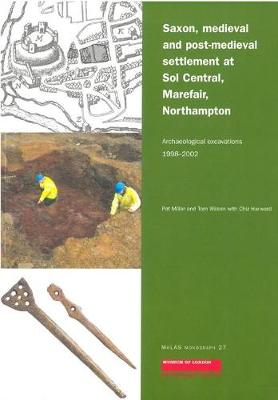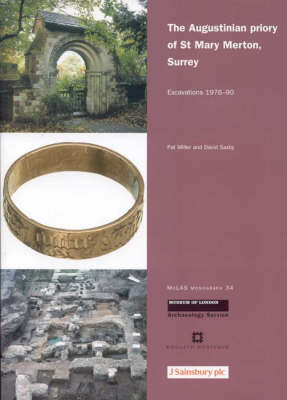MoLAS Monograph
2 primary works
Book 27
Saxon, Medieval and Post-Medieval Settlement at Sol Central, Marefair, Northampton
by Pat Miller, Tom Wilson, and Chiz Harward
Published 24 January 2006
Excavation work by Northamptonshire Archaeology and MoLAS revealed residual prehistoric and Roman artefacts and Middle Saxon settlement evidence in the form of a single sunken-floored building. Activity intensified in the Late Saxon to Norman period, when metalworking, crop processing and bone working took place at the site. The establishment of buildings suggests the main Saxon settlement around St Peter's Church spread northeastwards towards the limits of the town. A cemetery was established on the site in the 10th century and associated with the chapel of St Martin in the 12th century, from which 72 burials were excavated. The area continued to develop during the medieval period, with construction of timber and stone buildings and intensifying industrial activity represented by pits, hearths and smithing debris. The cemetery remained in use until the mid 13th century. By the 14th century the route of Pike Lane was established and evidence has been found of metalworking, cereal processing, animal husbandry and butchery, and small-scale tanning. Use of the area declined during the 15th and 16th centuries.
Book 34
The Augustinian Priory of St Mary Merton, Surrey
by Pat Miller and David Saxby
Published 10 October 2007
Excavations 1976-90 at the priory of St Mary Merton revealed much about the layout and development of this monastery from the 12th century to the Dissolution. Founded on its present site beside the Wandle river, c 11.3km south-west of London, in 1117, Merton was one of the most influential of all the English houses of regular canons, and was much favoured by Henry III. Of particular interest are the monastic infirmary complex - hall, chapel, cloister and ancillary buildings - and the large number (700+) of burials excavated from the external cemetery, church, cloister and chapter house.

